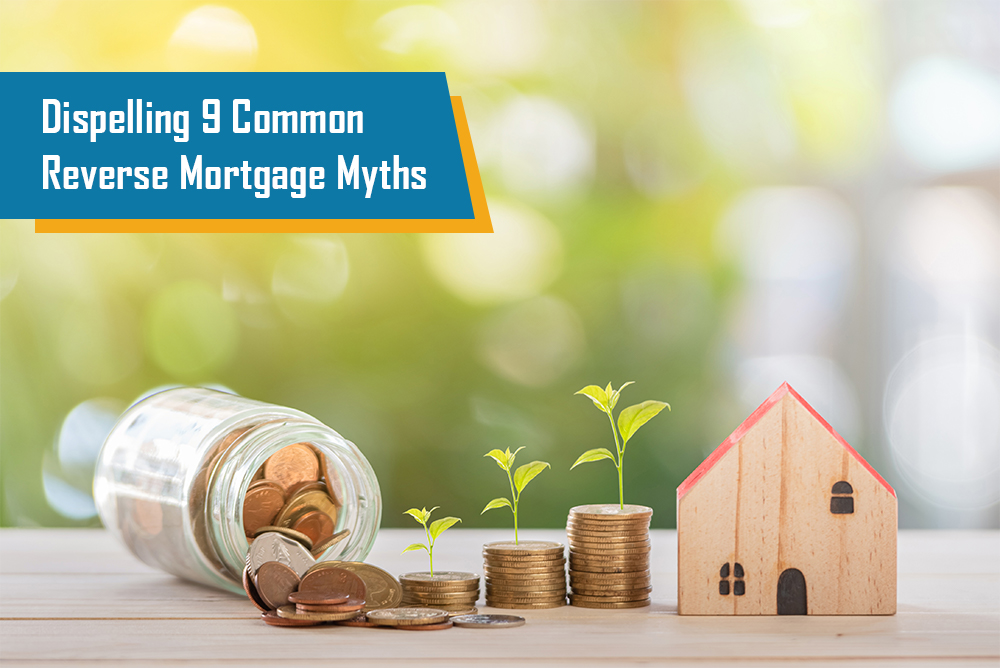
Dispelling 9 Common Reverse Mortgage Myths
Tags:
Reverse mortgages are a great option for homeowners who are looking to add to their fixed or limited income.
Contrary to a HELOC (home equity line of credit), a reverse mortgage grants Canadian borrowers tax-free money accessed from the existing equity they have built in their home (up to 55% percent) to use as they wish, with no month-to-month payments required.
Fortunately, in Canada, reverse mortgages are a highly regulated financial product; however, the same cannot be said for many other countries. This has resulted in a variety of misconceptions regarding the Canadian CHIP Reverse Mortgage®, in particular.
Thus, we created this article to bring peace of mind to Canadian homeowners by disputing nine of the most common myths about reverse mortgages in Canada.
These nine myths are as follows:
Myth #1: You Will No Longer Own Your Home
Loss of home ownership with a reverse mortgage is quite a common myth that causes unnecessary worry for homeowners. However, just like with a conventional mortgage, you and your spouse (if applicable) will continue to own your home and maintain the title. You may continue to live there for as long as you desire, and the bank will have no power in forcing you to sell.
Similarly, it is often believed that a homeowner’s children will lose the family home with a reverse mortgage, as well, when this is simply not the case. Any heirs will maintain the option of keeping the home as long as they continue to pay off your reverse mortgage after your passing.
Myth #2: You’ll End Up Owing More Than Your Home’s Worth
Another popular assumption among homeowners that is simply false is that a reverse mortgage will result in owing more than the property’s value. In reality, reverse mortgage rules in Canada will enable you to borrow a maximum of 55% of the home’s worth, meaning you’ll retain a considerable chunk of the equity.
While interest fees on the loan can play a role in abrading this equity, your home’s value along with its respective equity is still likely to increase with time. In other words, property values would need to suffer a serious decline to ever result in you ever owing more than your home’s worth.
Myth #3: You Must Be at Least 65 Years Old to Qualify
While this might be the case in other countries, Canada’s CHIP Reverse Mortgage is available to homeowners aged as young as 55 years and older. In fact, the older a borrower is when they apply for the CHIP Reverse Mortgage, the greater the loan they will likely be eligible for.
Myth #4: The Application Process is Too Complex
The process for obtaining a reverse mortgage is actually very similar to that of a conventional mortgage. In conjunction with your home appraisal, you will need to put together paperwork demonstrating sufficient income, and also report any debts that are secured by your property, as well as any mortgages you have on additional properties.
The only real difference with a reverse mortgage application process is that you’ll need to acquire independent legal advice prior to your approval in order to be accepted. This advice serves as a form of protection to ensure borrowers thoroughly understand how a reverse mortgage works.
Myth #5: Reverse Mortgages Are Very Expensive to Arrange
Yet another misconception about reverse mortgages is that they are very costly. The truth is that while you’ll still need to pay for your property’s appraisal in addition to independent legal advice (as with traditional mortgages), your only other expenses with a reverse mortgage will include the one-off closing and administration fee.
When you compare this to other alternatives, a reverse mortgage actually ends up being the more cost-effective option.
Myth #6: Interest Rates on Reverse Mortgages Are Higher Than on Conventional Mortgages
While interest rates for reverse mortgages are often greater than those of conventional mortgages, the difference is typically by only one or two percentage points. Reverse mortgages will have only slightly higher interest rates since they don’t require monthly payments to be made by borrowers.
Myth #7: Reverse Mortgages Are Impossible to Leave
Fortunately, reverse mortgages are possible to get out of. In fact, there are workable options available for repaying reverse mortgage principles and interest if homeowners decide to go this route.
With conventional mortgages, however, you might be presented with a prepayment charge, particularly if you wish to discharge the full balance in one go (such as with selling the home).
Myth #8: You Must Obtain Mortgage Insurance
This is another myth about reverse mortgages that only applies to other countries. When Canadian homeowners take out a CHIP Reverse Mortgage, they won’t be required to pay for mortgage insurance.
Myth #9: You May Face Eviction if You Miss Payments
With a reverse mortgage, there is actually no schedule of payments at all, so it would be impossible for you to ever miss any. This is due to the fact that the equity you have in your home takes care of the interest on a reverse mortgage.
Ready to start reaping the benefits of a reverse mortgage?
If you’re looking to unlock the equity you have saved in your home with a reverse mortgage, our mortgage lenders in Ontario are ready to lend a hand. Canadalend.com can help you begin the hassle-free process of obtaining a reverse mortgage, so you can move closer to achieving your financial goals.
To learn more about our reverse mortgage solutions and financing options, call Canadalend.com at 1-866-I CAN LEND or contact us here.